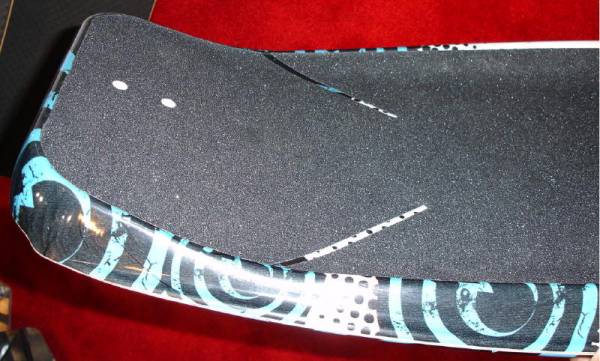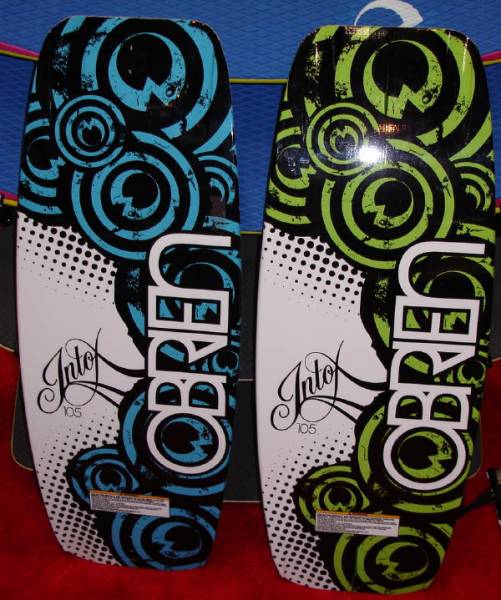
 Home Home
 All Articles All Articles
 Wakeskate Guide Wakeskate Guide
 Discussion Forums Discussion Forums
 Features Features
 Reviews Reviews
 Trick Tips Trick Tips
 Wakeskating History Wakeskating History
 Links Links
 Link To Us Link To Us
 Wakeboarding Wakeboarding
 Wakesurfing Wakesurfing
 Wakeboards Wakeboards
 Wakeboard Towers Wakeboard Towers
 Hyperlite Wakeskates Hyperlite Wakeskates
 Liquid Force Wakeskates Liquid Force Wakeskates
 Byerly Wakeskates Byerly Wakeskates
 Buy Wakeboards Buy Wakeboards
 Ronix Wakeboards Ronix Wakeboards
 Liquid Force Wakeboards Liquid Force Wakeboards
 Buy Wakeskates Buy Wakeskates
 Wakeboard Towers Wakeboard Towers
 Wakepics Wakepics
 Wake Videos Wake Videos
 Complete Longboards Complete Longboards
 Article Alert Article Alert

 Media Center Media Center
 Pictures Pictures
 Videos Videos
 Buy Wakeskate Videos Buy Wakeskate Videos

 Grip Deck Grip Deck
 Getting Up Getting Up
 Dock Start Dock Start
 Ollie Ollie
 HS Wake Jump HS Wake Jump
 TS Wake Jump TS Wake Jump
 HS Backside 180 HS Backside 180
 BS Pop Shuvit BS Pop Shuvit
 FS Pop Shuvit FS Pop Shuvit
 Surface 180 Shuvit Surface 180 Shuvit
 FS Bigspin FS Bigspin
 TS Shuvit to Indy TS Shuvit to Indy
 Kickflip Kickflip

 Advertise Advertise
 Contribute Articles Contribute Articles
 Submit A Trick Submit A Trick
 Feedback Form Feedback Form
 Visitor Feedback Visitor Feedback
 About RSS About RSS
|
O'Brien's Intox Wakeskate ExplainedAuthor: Wakeskating.com Staff
Date: 02-07-2009
View the entire O'Brien photo gallery here.
Derek Seaman is one of the masterminds behind O'Brien's new wakeskate, the Intox. And Derek has actually been experimenting with wakeskate design for quite some time. I had the pleasure of hearing a few stories back in 2003, and at that time he was already testing some custom designed boards that were unlike anything in wakeskating. But now Derek has the opportunity to make his designs a full-on reality for wakeskaters everywhere. Derek is here to explain some of the design features of his first major wakeskate release with O'Brien.
Why did O'Brien want to step up their involvement in wakeskating to go beyond the traffic series?
Well, I think it was time. O’Brien has always had a strong desire to step it up in the wakeskate scene, but they wanted to make sure they did it right with the right product. By working together on this project, we leveraged our combined talents to achieve that goal. From every experience we've had at the camp, O'Brien makes a solid product which is usually highly underrated. We've had countless customers on other brands of wakeboards and they use our equipment and fall in love. I think this skate will fit perfectly in line with everything else they make.
When did you begin conceptualizing this wakeskate?
Well, a while ago I had an idea for a composite wakeskate with thicker kicktails, so I drew it up on a simple cad program. I had a friend from Switzerland make me a few prototypes but that's for another article and about as far as it went. Fast forwarding a few years, I decided to start a wakeboard camp with my close friend, Sean O'Brien, who was newly sponsored by O'Brien (no relation unfortunately). We developed a strong relationship with them and at Surf Expo '06, I asked if they were ever interested in designing a better, high-end skate. A few weeks later, Chris Johnson, the lead designer for O'Brien, said yes they were interested. The original design came partly from my old cad drawings, which basically gave the dimensions and partly Chris' talent to flow those dimensions together with a great rocker pattern into a great feeling and looking skate.
What were your goals with this design?
The design is meant to give the rider more control and allow for different foot positioning. The bigger kicktails allow you to change your foot positions on tricks in a way that you can gain more leverage for more snap. The concave gives you more control for your front foot which helps with everything from wake to wake to flip tricks.

Try to explain the thickness of this wakeskate, since it is a point of criticism from some riders.
Having more concave would help to feel like you have more control; you can feel the board more. But really the kicktails are the most important part of this design. The thicker kicktails allow for maximum leverage, not only in bringing the nose up but in forcing the tail into the water. And that tail being forced into the water is what really creates pop. So the steeper and longer the kicktails, the more leverage you will be able to generate. Now there is a balance because too steep or too short and it feels awkward to stand on. A few skates I have tried even bothered my knees from the angle. But Chris did a killer job of flowing it together so that the kicktails are substantial but not so much that it is uncomfortable. Also, you addressed the thickness of the board, but you have to see it in person. Yes, the kicktails and concave are thick; they have to allow the length and steepness without it being hollowed out like a bi-level. But it thins out considerably more than any of the other extreme contoured skates. I just think the pictures were misleading.
What made you go with this concave design?
It's a bit different, having a large flat spot and what looks to be a somewhat extreme concave towards the rails. This was all Chris. It was a task to get the concave dialed so that it was substantial enough for control and flip tricks but also so that a size 12 shoe didn't feel like they were stepping on something. I think Chris flowed the concave very well for the Intox.

Describe the rail and edge shapes--are the edges sharp, or somewhat round? Will people be able to dance on the lip or is it more of a hard edging deck?
This board is designed to be an all around board, skate style and wake style. We used a step down rail simply because there is so much concave. If we wouldn't have, the board would not have gone anywhere. Chris designed the rails to have a very round edge in the middle and as it gets towards the nose and tail, it thins out to give some grip for wake to wake.
How about the channel placement/design?
The bottom is flat and smooth for sliding, minus two slight channels on the nose and tail. This was designed a little differently because of the ideas we had for leverage with the kicktails. Most skates have the channel running through the middle of the skate but that reduces the surface area being forced into the water on an ollie. The Intox's channels help to penetrate the water, thus allowing to push the tail deeper and allowing for more upward force (more pop).
Why did you decide to make the Intox compression molded?
To be honest, I have never understood the wood thing. I rode and broke so many wood boards in the beginning that financially I couldn't afford it. I also starting thinking about designs I'd like to try, but they were either impossible with wood or the board would end up being 30 lbs. I do understand the forgiveness and dampening effect of wood, but I feel it's very limiting with design. The wood concave boards seemed like a huge improvement from the flat decks but I never felt like it was enough concave or kicktail. And like I said before, if you built up the concave and kicktails with wood this much, it would weigh 30 lbs.
Finally, what kind of rider is this skate geared towards, or what type of rider might be best suited for this deck?
This deck is for everyone. I have fallen in love with it and I think a lot of people will too. We have put beginners to pros on this board and always have positive feedback. The one thing I would say is that, like all of the extreme concave boards out now, you have to give it a few tries to understand it. The first time I rode it, I thought, 'Wow, why did I make the kicktail and concave so extreme?' If you go from a flat deck to this board, it feels a little awkward. Then you start really using the kicktail for leverage on tricks, placing your foot in different positions on different tricks, locking your feet in the kicktails for wake to wake, and you won't go back.

O'Brien Intox
Weight: ~8 lbs
Rocker: 2.1" 3 Stage
Fin configuration: Standard
Shop For Wakeskating Gear 
|
|

 Wakeboards Wakeboards
 Ronix Wakeboards Ronix Wakeboards
 Hyperlite Wakeboards Hyperlite Wakeboards
 Liquid Force Wakeboards Liquid Force Wakeboards
 Slingshot Wakeboards Slingshot Wakeboards
 CWB Wakeboards CWB Wakeboards
 Wakeboard Bindings Wakeboard Bindings
 Ronix Bindings Ronix Bindings
 Hyperlite Bindings Hyperlite Bindings
 Liquid Force Bindings Liquid Force Bindings
 Slingshot Bindings Slingshot Bindings
 CWB Bindings CWB Bindings
 Wakeboard Packages Wakeboard Packages
 Wakeskates Wakeskates
 Wakesurf Boards Wakesurf Boards
|